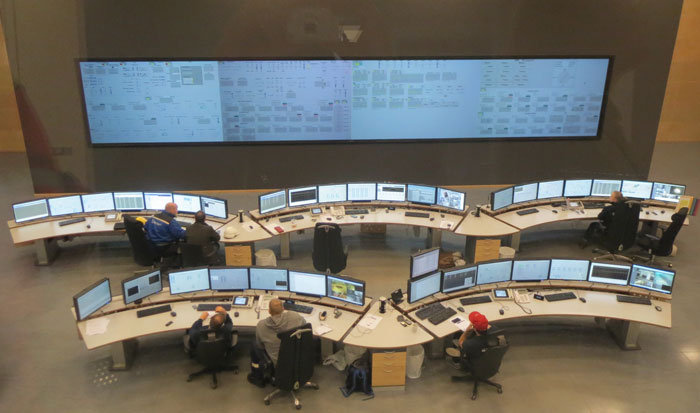Level One and Level Two High-Performance Displays
What are High-Performance Displays?
High-performance displays are an essential component of modern control rooms. They provide operators with clear, concise, and easily understandable information about the processes they’re monitoring. These displays are designed to reduce cognitive workload, increase situational awareness, and ultimately, improve the overall performance of your control room.
There are two primary levels of high-performance displays: Level One and Level Two. Each level serves a specific purpose and offers unique benefits to control room operators. Let’s take a closer look at each type.
Level One High-Performance Displays
Level One displays act as the frontline in your control room, offering operators an overview of the current system status. These displays are designed to quickly identify any abnormalities or potential issues that demand immediate attention.
Key features of Level One displays include:
- Simplified graphics: Level One displays employ simplified graphics and visualizations to represent complex data and processes, enabling operators to grasp the current system status without being overwhelmed by excessive detail.
- Putting Data into Context: A good level 1 display will help operators to put the data into context, (is this a good or bad number)? The data will be configured into easy to understand context, good data, off-normal date, abnormal and urgent data.
- Color-coded status indicators: These displays often use color-coding to highlight the status of various components within the system, allowing operators to spot potential issues at a glance.
- Real-time data: Level One displays provide real-time data updates so that operators have access to the most current information about the system they’re monitoring.
- Integration with other Situation Awareness tools: Overview data will incorporate trending data and CCTV information to reinforce understanding and help with problem resolution.
- Customizable layouts: These displays can be tailored to suit the specific needs and preferences of your control room operators, resulting in a more efficient and intuitive user experience. The displays may also incorporate information to Managers and Engineers to help with problem solving and focus attention on performance and energy costs.
Level Two High-Performance Displays
Level Two displays go a step further, providing more detailed information about specific components or processes within the system. Operators typically access these displays when they need to investigate a potential issue or perform a particular task.
Key features of Level Two displays include:
- Detailed graphics and visualizations: Unlike Level One displays, Level Two displays offer more detailed graphics and visualizations, giving operators a deeper understanding of the components or processes they’re examining.
- Historical data: In addition to real-time data, Level Two displays usually provide access to historical data, allowing operators to analyze trends and identify potential issues before they escalate.
- Interactive elements: Level Two displays may feature interactive elements that enable operators to manipulate data, adjust settings, or perform other tasks directly from the display.
- Contextual information: These displays often supply contextual information, such as alarms or notifications, to help operators comprehend the implications of the data they’re viewing.
- Go to page to make change: The level 2 display is the operators first go to page to initiate change and the vast majority of operators moves are done at the Level 2 page design.
Selecting the Right High-Performance Displays for Your Control Room
When choosing high-performance displays for your control room, it’s crucial to consider the unique requirements of your operations. Level One displays are ideal for providing a quick overview of system status, while Level Two displays deliver more in-depth information for troubleshooting and task execution.
By incorporating both Level One and Level Two high-performance displays, you’ll create a more efficient and effective control room environment that empowers your operators to make informed decisions and respond rapidly to potential issues.
This method fully meets new International Standards and local ISA 101 regulations for HMI design.
User Centered Design Services Inc is committed to helping you optimize your control room operations with cutting-edge technology and best practices. Contact us today to learn more about our high-performance display solutions and how they can benefit your organization.

